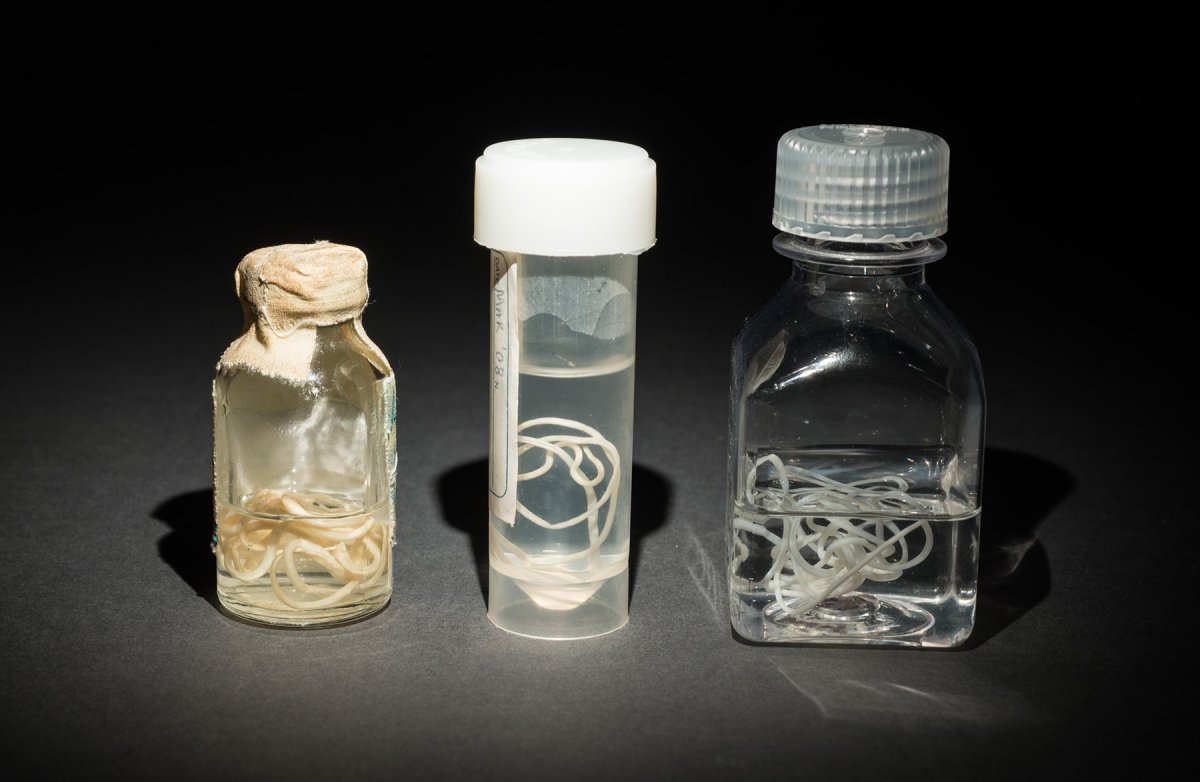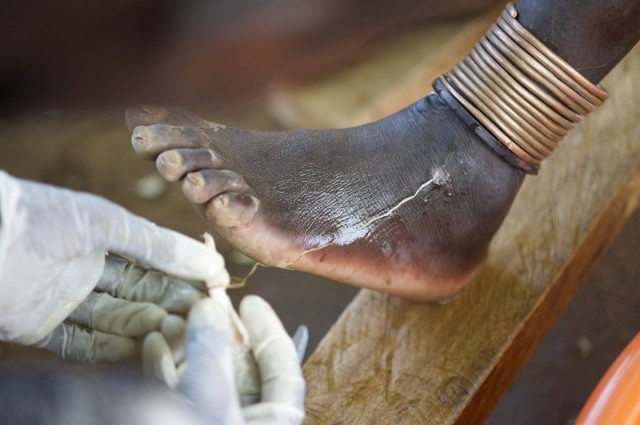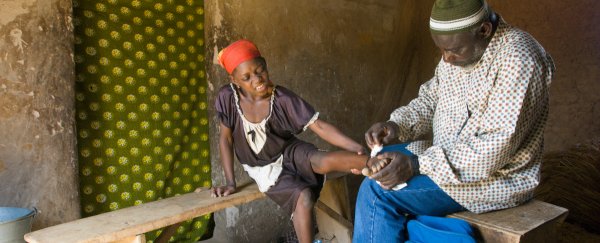For only the second time in the history of humanity, humans are very, very close to wiping a disease off the face of the planet. The first victim was smallpox, back in 1977, and this time, we have our sights set on Guinea worm disease, which is caused by the Guinea worm parasite, Dracunculiasis, and just happens to be one of the most horrible conditions I've read about in a long time.
The Guinea worm infects people who drink water contaminated with its larvae, and it now only exists in four countries in Africa. But that wasn't always the case. In 1986, there were 3.5 million cases of infection reported across Africa and Asia.
Former US President Jimmy Carter first saw the disease in Africa in the '80s, when he visited a village in Guinea where more than two-thirds of the locals were infected.
"I saw a young woman holding a baby in her arms … But it was not a baby - it was her right breast," he told a group of reporters, as Nicholas St Fleur reports for The Atlantic. "It was [swollen to] about a foot long. And coming out of the nipple of her breast was a Guinea worm."
After the trip, Carter decided to wage war on the parasite through his Carter Centre Foundation - and 30 years later, he's almost won. Thanks to their program, which uses filter technology and education to help disrupt the life cycle of the Guinea worm, the centre has announced that there are now only 126 cases left of the parasite.
The life cycle of the Guinea worm is pretty terrifying in itself - once it's infected a host, the larvae develops into a pale worm that can stretch up to one metre long (see below).
 The Carter Centre
The Carter Centre
This growth period lasts for around 12 months, during which time the host might not even know they're infected. And then a painful blister will suddenly appear somewhere on the host's body - usually the foot or another sensitive region. That's when the worst part begins - the worm starts to emerge out of its host's skin over an agonising 30-day period.
"Imagine a worm one metre long coming out of your skin … That in itself is a nightmare to me," Craig Withers, a program director at the Carter Centre, explained at the launch of a new exhibition on disease eradication at the American Museum of Natural History in New York, as St. Fleur reports. "It's sort of like Alien in real life."
 L. Grubb/The Carter Centre
L. Grubb/The Carter Centre
In an attempt to ease this pain, the infected human often lays down in water to try to wash the worm out of their body or sooth the wounds - but this actually allows the worm to lay its eggs and start the whole cycle again.
The Carter Centre realised that although the disease was widespread, the fact that it was only caused by one parasite meant that it, effectively, could be stopped. They then worked with communities to explain the parasite's life cycle, and to keep them away from water while their worms exited their bodies.
But most importantly, they developed a simple and cheap straw filter to help eliminate parasites from drinking water. The "pipe filter" as it's called, involves a small piece of steel mesh inside a plastic drinking tube, and it ensures that the water being drunk is free of the tiny worms.
Of course, the parasites aren't gone just yet, and it's hard to know just how long it will take before we can say the disease is gone for good.
But it's ridiculous (and inspiring) to think that, simply by using education and very basic technology, we can stop a devastating disease in its track. So the big question is - what's next?
Source: The Atlantic
